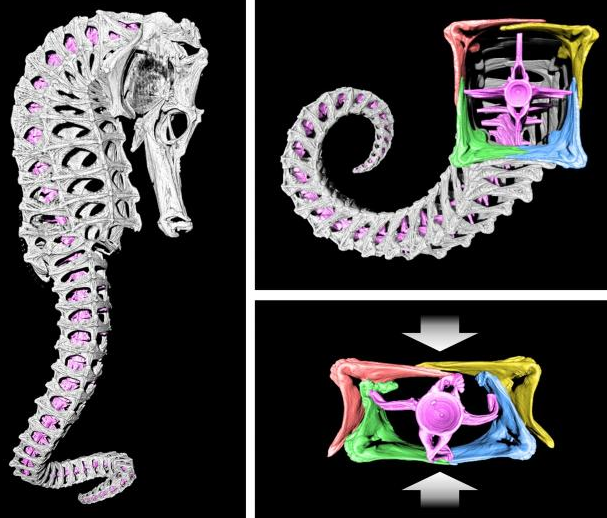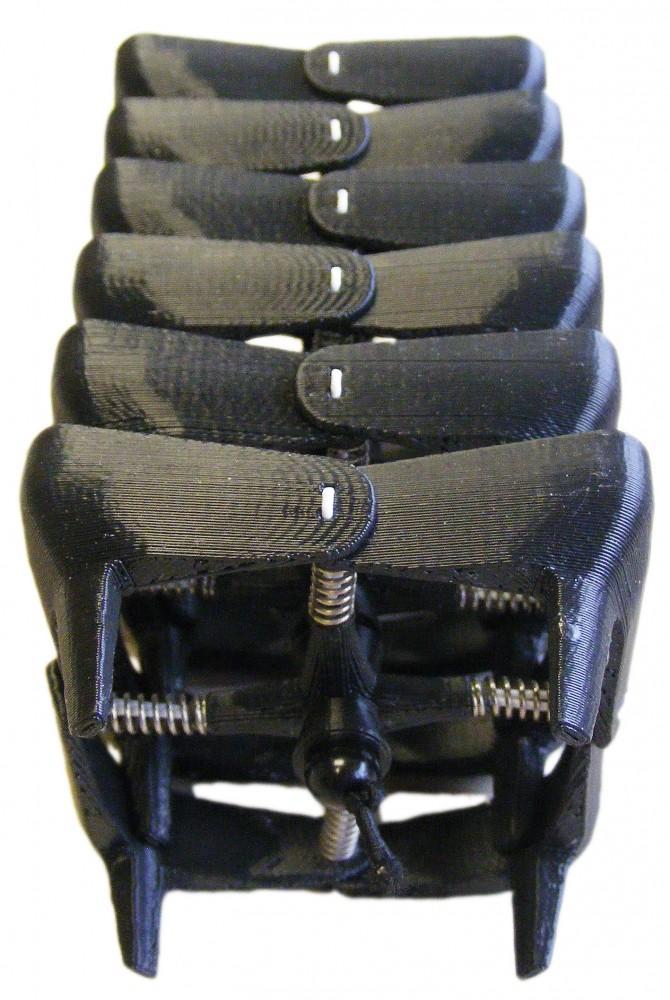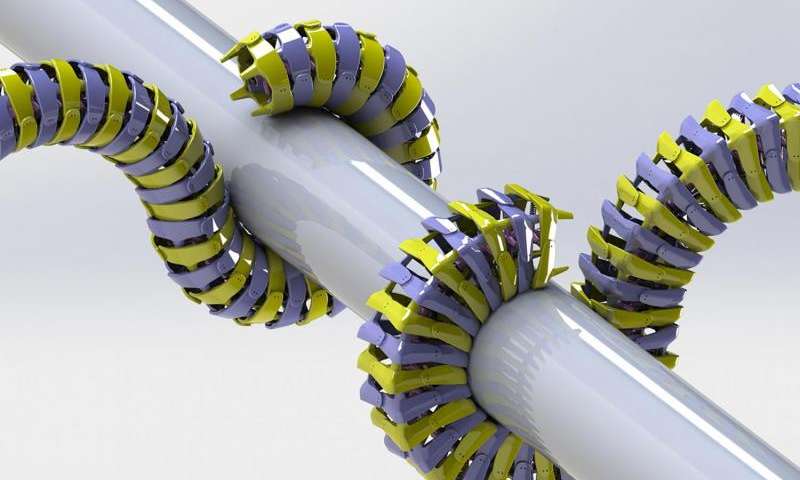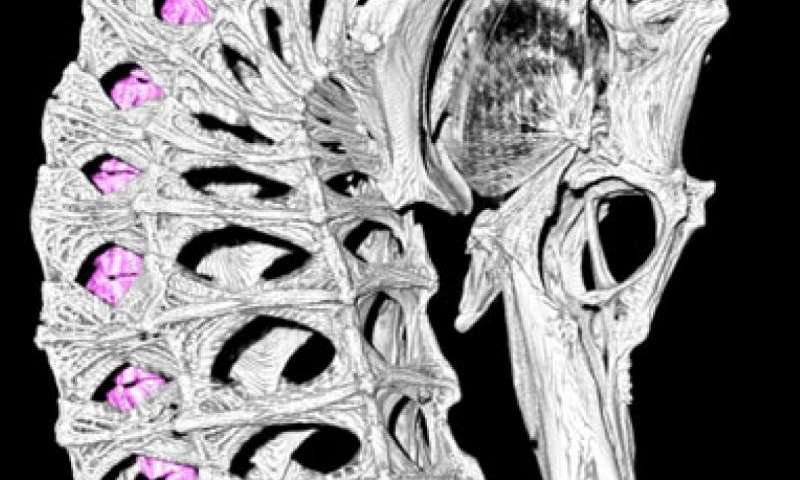 What a joy it would be to have the job of studying the fascinating world of the seahorse, and it’s unique anatomy. Recently, scientists had exactly that in their job descriptions in trying to answer several elusive questions regarding the seahorse: why is its tail square, and how does that–along with its armor–help with grasping and survival?
What a joy it would be to have the job of studying the fascinating world of the seahorse, and it’s unique anatomy. Recently, scientists had exactly that in their job descriptions in trying to answer several elusive questions regarding the seahorse: why is its tail square, and how does that–along with its armor–help with grasping and survival?
Allowing for the inspiration of nature and evolution to seep into technology and innovation, the researchers are looking toward the tiny fish, this thing of delicate fairytales and magic, to study ways to better improve mechanisms in robotics, as well as making medical devices. While most everyone remembers the seahorse for its delicate looking appearance and the fact that the males carry the embryos (often resulting in voluminous numbers of progeny–up to 1500 at once) so that the females can lay more eggs, there are a number of fascinating facts regarding these tiny vertebrates.
We humans have a long history with these little fish, found in tropical waters around the world, from children’s stories and illustrations to uses in ancient Chinese medicine. They are even popular as pets and often raised simply to be sold for inhabiting aquariums.
What’s caught the attention of the research community, however, is the way they are able to move–and grasp.
These technologically savvy researchers, led by Michael Porter, an assistant mechanical engineering professor at Clemson University in South Carolina, went one step further in studying seahorses, employing 3D printed models to evaluate and assess their anatomy. To assure that ‘no seahorses were injured’ in their research, they were able to use the 3D printed structures for a variety of rigorous experiments that included bending, twisting, smooshing, and even crushing.
Why such brutality aimed at the 3D models? There was a method to the madness as scientists examined their 3D prints from every angle in trying to figure out how to use some of the seahorse’s better attributes in their own mechanical devices. Twisting showed how the armored plates protect the tail and limit movement, as well as causing it to revert back to its natural shape quickly and very efficiently. The square shape quite logically, allows for a more comprehensive way to grip due to the greater number of contact points.
If you’ve ever studied a seahorse at your city’s aquarium, you have probably noticed their graceful floating and bending, which allows them to grasp and see what they are doing at the same time.
While compressing and crushing might sound like barbaric practices, even on a 3D model, the researchers had good reason to do so, in finding parallels with potential for mechanical load. Able to absorb high impact due to the evolution of strategic joints, the square tail is superior to a rounded one, and also even manages to retain its unique shape when being crushed.
While it may seem like a jump to apply these experiments and findings to creating important devices, the seahorse certainly shows solid evidence for excellence in not only repelling predators but also how armor and grasping seem to work in tandem while their bony tails work to grasp, bend, and twist. These observations and studies could lead to more robust robots displaying better ability to hold and clamp objects tightly.
“Human engineers tend to build things that are stiff so they can be controlled easily,” study co-author Ross Hatton, an assistant professor in the College of Engineering at Oregon State University, said in a statement. “But nature makes things just strong enough not to break, and then flexible enough to do a wide range of tasks. That’s why we can learn a lot from animals that will inspire the next generations of robotics.”
Detailed findings authored by Dr. Michael Porter and his team regarding the studies on seahorses were published online today (July 2) in the journal Live Science. Also coauthored by Dominique Adriaens of Ghent University in Belgium; Ross L. Hatton of Oregon State University; and Marc A. Meyers and Joanna McKittrick, both of the University of California, San Diego, the paper is being well-received, as the researchers continue to take current innovations in snake-like robotics to the next level with their findings from the seahorse study.
“This study demonstrates that engineering designs are convenient means to answer elusive biological questions when biological data are nonexistent or difficult to obtain,” researchers wrote in the article. “In addition, understanding the role of mechanics in these biologically inspired designs may help engineers to develop seahorse-inspired technologies for a variety of applications in robotics, defense systems, or biomedicine.”
Causing us to think about robotics in a different and more inspiring way, the underwater animals may spark off innovation that leads to easier interaction with robots in workplace settings. As 3D printing and other technologies cause many innovators to toss out traditional ideas and cause enormous positive change, looking toward a softer, more fluid aspect of nature may cause some changes in the ways we create mechanical help for ourselves. The seahorses, given such thorough inspection, may allow for engineers to figure out how to use the armor concept, and more, to benefit contemporary robots.
Discuss your thoughts on these 3D printed experiments and the inspiration afforded by seahorses in the 3D Printed Seahorse Tails forum over at 3DPB.com.
Subscribe to Our Email Newsletter
Stay up-to-date on all the latest news from the 3D printing industry and receive information and offers from third party vendors.
You May Also Like
APWORKS Expands Scalmalloy 3D Printing with Farsoon and CNPC Partnerships
In the lead up to Formnext 2024, Airbus subsidiary APWORKS has teamed up with Farsoon Technologies and CNPC Powder to expand the production and application of Scalmalloy, APWORKS’ high-strength, corrosion-resistant...
3D Printer OEM Axtra3D Raises Nearly $10M in Series A
Axtra3D, an original equipment manufacturer (OEM) of 3D printers leveraging the company’s patented Hybrid Photosynthesis (HPS) technology, has received another $4.5 million in Series A financing, bringing its total Series...
Caracol AM to Launch its First Metal 3D Printer at Formnext 2024
Caracol AM, a US-Italian original equipment manufacturer (OEM) of large-format additive manufacturing (AM) systems, has announced the launch of the company’s first metal printer, Vipra AM. A directed energy deposition...
ADDIMETAL to Debut First French Metal Binder Jetting 3D Printer at Formnext 2024
ADDIMETAL, a French original equipment manufacturer (OEM) of additive manufacturing (AM) hardware, will debut its first product, the K2-2 metal binder jetting (MBJ) printer, at Formnext 2024 in Frankfurt, Germany...









































